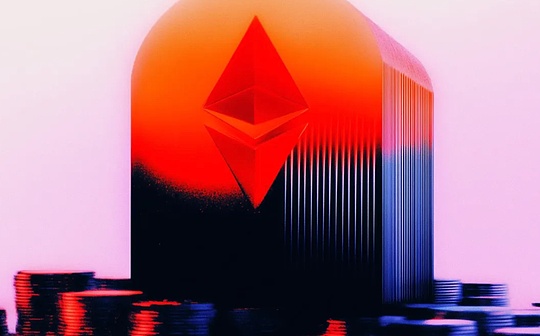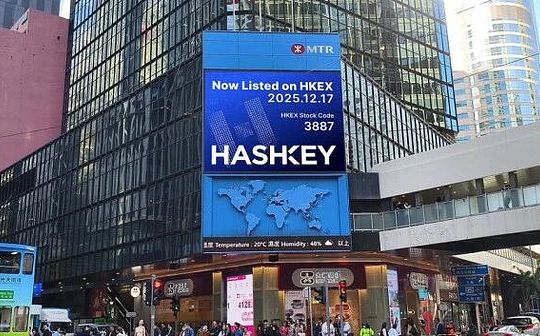
Author: NFT Price Floor Diario, Bankless; Compiled by: Wuzhu, Bitchain Vision
Hard and soft power
Most analysis of what makes Layer 1 blockchain superior to other blockchains and what is a great investment usually emphasizes the technical aspect.They often describe innovative and groundbreaking attributes that are considered panacea that solve all the inherent problems and dilemmas faced by public blockchains since their inception.
While it is clear that technology is crucial, the continuous improvement and discovery of consensus design, cryptography and distributed systems engineering (hard power) is essential to make this technology accessible to everyone in the world, it is importantRemember, blockchain is more than just technology.
In fact, blockchain relies on the beliefs of the community (focus) and is rooted in common values, culture, and the best universally accessible spirit.They provide everyone with the opportunity to participate in an open, optimistic history that is recorded in the block and accepted by the imagination of the community.This is what we call the soft power of blockchain.

Blockchain is the ultimate coordination tool, an authoritative ledger for humans to record their digital existence and history.Blockchain is technology, but it is much more than technology.If you judge them only by technical standards, if you only evaluate their technical characteristics and ignore their soft power, you will miss a bigger picture.
About history, writing and accounting
As Yuval Noah Harari explains in a brief history of mankind, humans can dominate the world because they can collaborate on a large scale, thanks to our unique ability to believe in pure existenceIn the things we imagine, the story.
Those stories based on common belief systems, those cultural products that encode different aspects of human existence, when they are combined and recorded, history is produced.
How do we record history?writing.

So, on the one hand, we can define history as the sum of shared stories in which human society agrees on its importance and effectiveness.On the other hand, we can be sure that history and writing are intertwined, because there is no right history without a recording system.
Let’s add another section here.The world’s earliest cuneiform vernacular originated from an ancient accounting system that used clay markers to track commodities such as livestock and grains in early agricultural societies in the Near East.Initially, these marks represent various commodities, different shapes represent different items or quantities, such as cones represent small amounts of barley.
By around 3500 B.C., with the emergence of cities and the economy becoming more complex, the types of markers expanded to about 300 different shapes to cover a wider range of commodities produced in urban areas.Interestingly, the ultimate driving force for developing writing comes from the shared belief in the afterlife of Mesopotamian society.
History, common beliefs, record systems, accounting mechanisms, tokens… Do these concepts sound familiar to you, anonymous?
Money and money are common beliefs
According to Harare, the ability of humanity to coordinate on a large scale is derived from our unique ability to believe in things that exist purely in imagination, such as God, the country, money and the law.
In other words, large-scale cooperative systems such as religion, trade networks and political institutions are the result of human beings’ unique fictional capabilities.
Under this framework, money will exist only when people share the belief that money is a system of mutual trust.In this sense, Harare’s argument is directly related to the subjective value theory.The theory holds that the value of any commodity is not determined by the inherent properties of the commodity, nor by the cumulative value of the components or labor required to produce or manufacture the commodity, but by the individual or entity that purchases or sells the commodity.
Due to this concept, the value of an object can rise significantly from the time it was created, as it is seen as more valuable or more popular in some cultural contexts.Many factors can affect this evolution, such as age changes, personal attachment, rarity, etc.In short, it is cultural relevance.
But why is this important?
Subjective Value Theory (STV) helps us understand all the value stores adopted in human history, such as salt, cattle, shells, gold, and crypto assets such as Bitcoin and Ethereum.
However, only by understanding Harare’s argument about the critical role that shared beliefs play in human history can we truly understand the full power of STV and how it works.
Just like human history itself, successful money and store of value are not only the products of initial, groundbreaking common beliefs—they are networked products that require constant attention!

Some people will say that there is no fun without money.In the case of blockchain, you’d better make sure your preferred L1 has a store of value as a native asset before claiming it’s better than similar assets.If it is not good money, it will not have good economic security.That’s it.
How do you make sure your native assets are truly a store of value, not just a fashion?
Historical and cultural vitality.The answer is here.
Blockchain as a digital history ledger
Remember that a public blockchain like Ethereum or Bitcoin is a shared, decentralized, tamper-free and censored ledger that helps record transactions and track assets.
In other words, once the information is recorded on the blockchain, it cannot be easily changed or deleted.This feature is crucial in keeping history because it ensures the authenticity of documents or transactions stored on the chain.
We greatly appreciate this clever system, which allows for trustless management of transactions and balances.But what about the actual historical records recorded?Isn’t it as important as the underlying technology itself?
In my opinion, it is definitely.
According to the rules set by the protocol, the value of Ethereum’s native asset ETH comes from its crypto-economic attributes.However, as we have already pointed out, all this makes no sense without a faithful and large human community that does believe that using networks and storing wealth in native assets.
The community’s shared belief in the value of the network has spawned a rich economic history recorded in the form of public ledgers on the Ethereum blockchain.It is this rich history, the common culture of this community, that leads to a positive feedback loop that continuously strengthens the value of its native asset, ETH.
History is nothing more than the sum of shared stories with community significance, and society has reached a consensus on its importance.As far as blockchain is concerned, their history reflects the social and economic relationships developed between community members.
These relationships should be measured not only by quantity but also by quality as a reflection of the culture that underpins them:
-
Is it fair to compare the creation of CryptoPunks and its second-order effects (which lead to the industry as a whole) with the launch of a low-cost NFT series (which leads to the temporary boom)?
-
Can we compare the impact of Uniswap and other 0-on-1 DeFi breakthroughs to the simpler 1-on-N protocols that offer incremental improvements that sometimes seem like excuses to sell tokens?
So while one might argue that all L1s have their own history etched in block form, unfortunately, not all blockchain history is born equal, their impact on their respective native assets (more specific)To put it, their ability to accumulate value in the long term and become a store of value) is also different.
Summarize
L1 has value as a coordination tool and a decentralized ledger that can be used to build economies and communities.However, not all blockchains are equal.Attributes such as decentralization, censorship resistance and trustlessness were initially technical characteristics, but evolved into core values that brought the community together (faith system/shared narrative).
Without a firm belief in these values and spirits, without a vibrant, creative community choosing blockchain as a home for its projects and a repository of creation and wealth, it would be impossible to develop a rich and lasting history.This shared history attracts new members who will help develop the network.It is this history that provides intangible but crucial support for assets: trust and ongoing attention from the community.
Think of Ethereum: Imagine how much it would be worth if Vitalik didn’t launch and build a foundation to manage it through an ICO and build a foundation, and how it would maintain its value for a decade.What if he didn’t implement the Proof of Work phase to prevent excessive concentration of tokens?What if his behavior deceived others and did not prioritize the best interests of the network?What if Ethereum was not selected as the main home by Larva Labs, Hayden Adams and many other founders?
The Ethereum community and history will be completely different.Technology is not a major issue because it is scalable even if challenged by technical debt.However, history is irrepeatable, irreplaceable, and indelible.Only through a rich and lasting history can the native assets of blockchain develop a premium!








